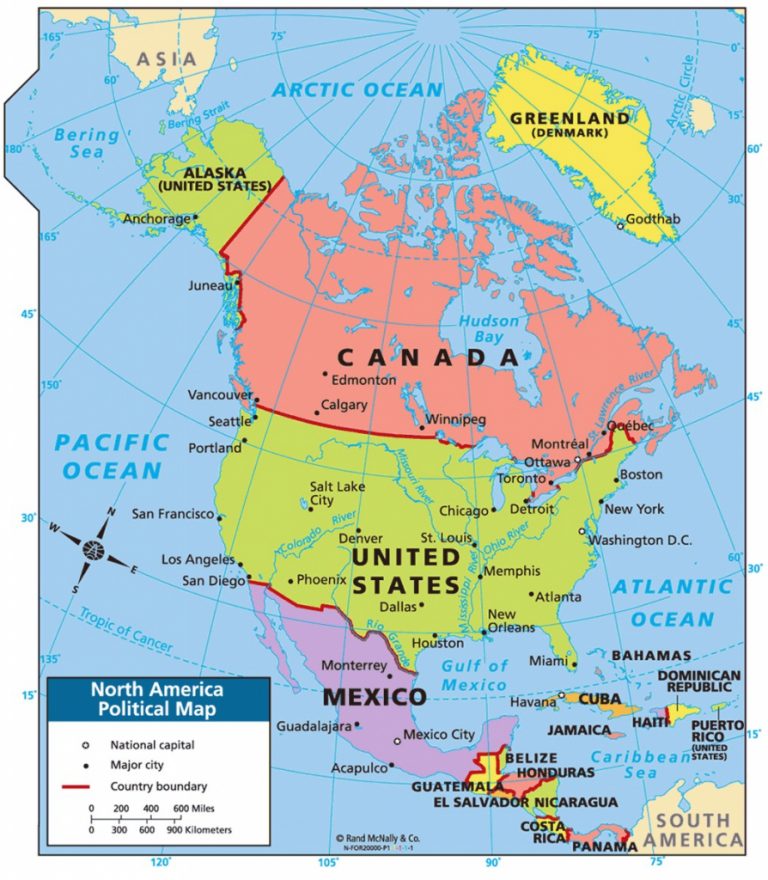Maps serve as essential tools for understanding our world, and the “North America map for kids” is no exception. Designed to be visually engaging and informative, these maps unpack the rich diversity of the continent while stimulating curiosity among young learners. Various formats exist, catering to different educational purposes, aesthetic preferences, and interactive needs.
One popular type of map for younger audiences is the political map. Political maps delineate national boundaries, illustrating countries such as the United States, Canada, Mexico, and the myriad of smaller nations in the Caribbean. They often employ vibrant colors to easily distinguish between different territories. Political maps not only help children learn the geographical extents of these countries but also introduce them to fundamental concepts such as capitals, major cities, and geographic landmarks. A North America political map typically highlights significant cities like Washington, D.C., Ottawa, Mexico City, and Toronto, giving context to where these locations fit into the broader picture of the continent.
In contrast, physical maps provide a three-dimensional perspective that unveils the natural features of North America. These maps display mountains, rivers, lakes, and other geographic formations, offering insights into the continent’s ecological diversity. Children can explore landmarks such as the Rocky Mountains or the Great Lakes, fostering an appreciation for natural wonders. Physical maps often employ tactile elements or raised features in children’s educational materials, making the learning experience more interactive.
Topographic maps represent another fascinating type that delves deeper into terrain elevation. These maps utilize contour lines to depict elevation changes, helping young learners visualize mountain ranges or valleys. While more complex, topographic maps can spark interest in geography and encourage children to think critically about how terrain influences human activity. For instance, discussion can ensue about why cities like Denver are located where they are, given their proximity to mountains.
Thematic maps introduce additional layers of narrative by focusing on specific topics such as climate, population density, or cultural aspects of North America. A climate map, for example, can reveal the varying climatic zones across the continent, from the arctic climate of northern Canada to the tropical conditions of southern Florida and Mexico. Such maps can enhance children’s understanding of climate zones and how these differences affect ecosystems and human habitation.
Interactive maps are becoming increasingly popular, particularly in the digital age. Online platforms often feature clickable maps, allowing kids to engage with the content. They can zoom in on different regions, access information about local cultures, or watch videos highlighting specific geographical features. This interactive approach makes learning more engaging than traditional methods, encouraging exploration and curiosity.
Another innovative resource is the infographic map, which combines visual elements with statistical data. Infographic maps can illustrate demographic trends, such as population distribution, ethnicity, or economic activities. For example, a map may showcase the predominant agricultural activities across different states, helping students connect geography with economics and environmental science. Such maps can also support discussions about sustainability and the impact of climate change in various regions.
Aside from traditional map types, educational materials can include globe representations tailored for younger audiences. These globes feature simplified cartography and are often designed with brighter colors and engaging illustrations. Rotating a globe can provide children with a visceral understanding of spatial relationships, making it easier for them to grasp the relative locations of countries and major cities in North America.
Moreover, integrating storytelling with maps can cultivate a profound understanding of geography and cultural context. Story maps, for instance, might present narratives that weave together geographical elements with legendary accounts or historical events that took place in specific locations. This approach not only captivates attention but also fosters empathy and cultural awareness as children learn about the stories and history of various communities across North America.
As children begin to engage with various types of North America maps, it’s crucial to emphasize the importance of a sustainable future. Understanding the geography of one’s surroundings equips young learners with the knowledge to make informed decisions about environmental stewardship. Maps illustrating natural resources, the impact of urbanization, or conservation areas can serve as educational tools for discussing climate change. By visualizing how human actions intersect with geography, children can develop a sense of responsibility towards protecting their environment.
In conclusion, the journey of exploring the North American map for kids is rich and multifaceted. It encompasses political, physical, topographic, thematic, and interactive dimensions, each encouraging curiosity and knowledge. Through storytelling and engaging visuals, these maps not only inform but also inspire young minds to become stewards of their environment. The comprehension of their geographical context enables children to appreciate the present and envision a sustainable future, creating an interconnected world that transcends borders and climates.
